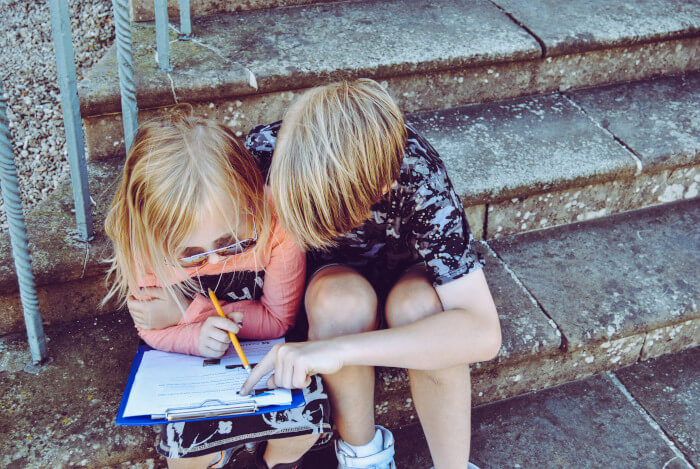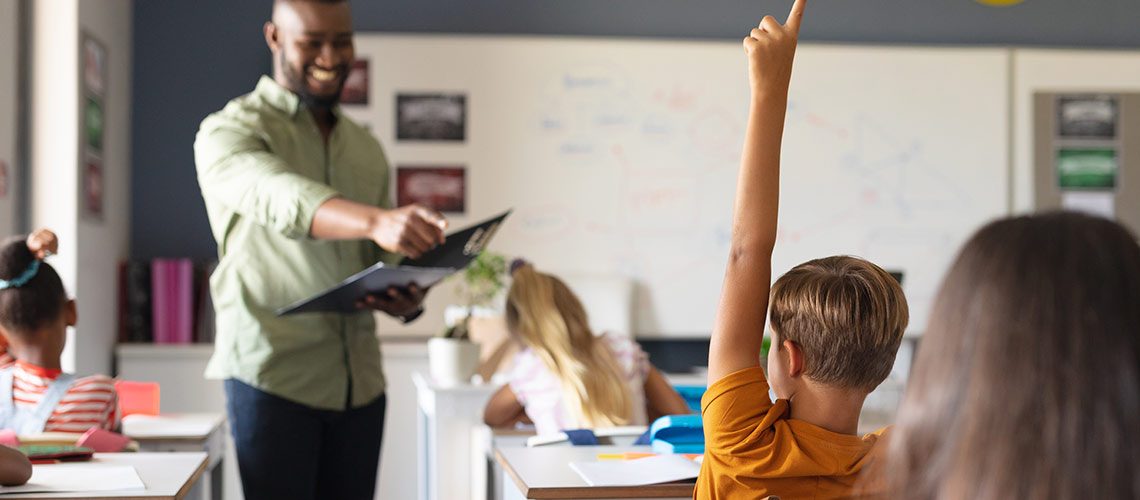The narrative on these students tends to go in one of two directions.
There’s the, “Oh good! You have John. If you need anything, just ask him and he’ll help you out. He’s great at getting the rest of the class involved as well.” This brings a smile to your face, and you look forward to working with them.
Then there’s the, “Oh, watch out for Allie. She’ll run the class if you let her. If you want to get control of that classroom, you’re going to need her on your side.” This narrative puts you on your guard and you start strategizing about how to best handle “Allie.”
Although they elicit two very different types of responses, these types of students have one thing in common, they are effective leaders. They have a goal in mind and an ability to inspire and persuade the rest of the class to join them in reaching it.
How can you develop student leadership in schools?
These types of students are generally what we would refer to as “natural-born leaders.” But does this ability make them good leaders? Does being a natural leader mean that anyone who isn’t as charismatic or persuasive can’t be a leader? What other traits and skills are needed in order for a person to become a good, effective leader?
Fortunately for the world, leadership is something that can be taught. In a previous post, we covered the ten characteristics of a student leader. These skills include being:
- Goal oriented
- Honest
- Hardworking
- Willing to serve others
- A good listener
- A good communicator
- A good decision-maker
- Encouraging
- Positive
- Responsible
How to teach those leadership skills in the classroom
One of the best all-encompassing ways to teach these skills is through group projects. You can either assign one leader to each group for the duration of that project (making sure to change leaders for each new project) or assign a different leader for each element of it.
For example, one student could be the research leader, another the report leader, someone else the visual presentation leader, and so on. Each leader would be responsible for guiding the rest of the group in establishing a concrete goal and delegating certain responsibilities. They would need to:
- Work hard
- Listen to the others
- Communicate their desires
- Make the final decisions
- Encourage the others in their tasks
- Maintain a positive attitude; and
- Take responsibility for the outcome of the project.
They would also need to serve the group in taking care of whatever work was left unfinished and act with honesty and integrity throughout.
Besides group projects, there are other ways to impart good leadership skills. Below is a list of some of the other ways you can teach these skills.

1. Making Goals
At the beginning of the year, you can guide the class in establishing classroom and individual goals. Post common goals somewhere in the classroom, and do periodic check-ins to see how the class is doing in terms of meeting those goals (you can, and should, do these check-ins with personal milestones as well).

2. Honesty
Literature and history are great places to talk about honesty. Select a particularly notable character or historical figure, and explore their life and the decisions they made. Discuss which of this person’s actions were honest and which (if any) weren’t. What were the outcomes of those actions? And more importantly, what we can we learn from that person’s experience as a leader?

3. Hard work and perseverance
Don’t make things too easy for your students — set realistic goals, and encourage them when they get tired or fail. Athletic activities and competitive learning games present great opportunities for practicing the skill of perseverance. Perhaps you could also briefly discuss the disappointment of losing and how you can learn from that experience.

4. Service
The first element of serving is seeing — students need to learn to see problems before they can be of service in solving those problems. You could, for example, discuss problems in the classroom, school, and community and bring these to your students’ attention. Then, you could encourage the class to brainstorm ideas for addressing those issues.
To practice service on a more daily basis, you can also assign classroom jobs or roles to help students gain hands-on experience with serving at least their own classroom “community.”

5. Listening
Listening is not nearly as easy as it sounds. Watch any kind of political debate and you can see the difficulty that adults have with this skill. So why not teach it through structured debates.
For younger kids, have them debate which animal is the best, who is the best superhero, what is the best superpower, etc. From these lighthearted debates, you could gradually work your way up to more serious questions, such as whether it’s better to save your money or to spend it and enjoy the immediate results, or whether you should step in to help someone in trouble or run to get an adult.
Of course, depending on the bravery of the teacher and the policies of the school, there’s also the option of having your older students debate some of the issues of the day.

6. Communicating
Classroom presentations are a great way to help students gain confidence in speaking to a group of students and sharing their ideas. Alternatively, you can incorporate play in your classroom to teach students these skills.
For example, one great communication game is “Lead the Blind.” In this game, one person is blindfolded while his/her partner (who is not blindfolded) works to lead him/her across a designated area by issuing clear instructions. (Note from experience: Play this game in an area where there isn’t anything that can be easily tripped over.)

7. Decision-making
Provide opportunities for the students to have choices and make decisions (but make sure you pre-select and pre-approve any pitches). These choices can include setting classroom rules, deciding on lesson activities, setting free time activities, etc.
Most importantly, be sure to guide your students in evaluating the costs and benefits of each option before they make their decisions.

8. Encouraging
Have your students make a list of the strengths and positive qualities they see in their classmates and provide time for those strengths to be communicated. Have the students list something they aren’t good at (and want to get better at) and discuss (individually or as a small group) how they can improve.

9. Thinking positively
Discuss the power of positive thinking. Demonstrate a positive attitude and a negative attitude — what are the outcomes of each? You can also look at key people in literature and throughout history (eg., Thomas Edison) and discuss the role that positive thinking played in their accomplishments as leaders.

10. Taking responsibility
Model responsibility in your class. When you make a mistake, own up to it. Discuss the personal empowerment of taking responsibility instead of passing the blame onto someone else — it allows you to focus more on what you have control over instead of feeling like a victim who has no control. Find a way to affirm or reward students for taking responsibility for their actions.
Who can be a leader?
Like the two examples at the beginning of this post, there are those to whom leadership seems to come easily and naturally. But this in itself does not make them good leaders (I am venturing a guess that any teacher with an “Allie” in the classroom would not view this student as a good leader, even though she is obviously an effective one).
Good, effective leadership is a skill that can be learned, practiced, and improved upon. And while we tend to notice the more obvious charismatic leaders with the loud and bold personalities, the fact is that anybody, even the quiet kid in the back who hardly speaks a word in class, can be a leader.
In fact, it is highly likely that at some point in their life, everyone will be called upon to lead in some capacity. With this in mind, it is crucial that we provide what training we can to prepare our students for leadership roles — to prepare them to be good, effective leaders that will take others in a positive direction.
Our world needs good, effective leaders. And with a bit of training and encouragement, our students have the potential to meet — and even surpass — that need.
Photo credit: woodleywonderworks; rawpixel; Kira auf der Heide; Ben White; Rachel; Pressmaster; US Department of Education; Ricky Turner; epollato0 / Flickr.com; Unsplash.com; Shutterstock.com; Pixabay.com


